Psoriasis on the feet is a common problem. It may occur due to hormonal imbalance, weakened immune system and other reasons. It can be cured with the help of medicines, traditional medicine formulations and physical therapy procedures.
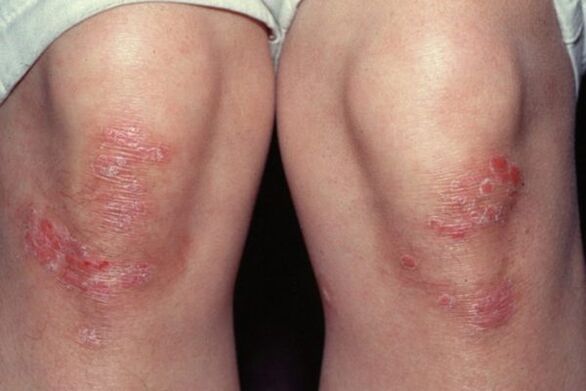
Causes and risk factors of leg psoriasis
Psoriasis on the legs is a pathology, and doctors cannot determine the cause. However, possible predisposing factors include:
- Genetic. This disease can be inherited (passed from parent to child).
- The work of the central nervous system is disturbed. Frequent stress can interrupt many processes in the body. In many patients, this rash occurs under stressful conditions.
- Hormonal disorders in the body. Disruption of the endocrine system leads to metabolic disorders, which is the inducement for the overproduction of skin cells.
- Weakened immunity. Psoriasis develops in the context of infectious diseases. The risk group includes patients with frequent viral infections and respiratory diseases (bronchitis, tonsillitis).
- Mechanical damage to the skin.
- climate change.
- Certain drugs are often used.
- Misuse of sanitary products leads to the destruction of beneficial microorganisms on the skin.
- Use of chemicals.
- Eat food that contains food additives and alcohol.

Classification and symptoms of leg psoriasis
There are many types of the disease, and each type has its own symptoms:
- Common (spotted, vulgar). The most common type of psoriasis affects almost 90% of all patients. It manifests as a rash in the form of red spots, which spread quickly on the legs. Without treatment, small patches of 3-4 cm in diameter can join together and form a large rash. Accompanied by intense itching, bleeding may occur when scratching. A rash on the knee will have this symptom.
- Exudative (pustules). This type is rare and occurs in more serious forms. It may recur repeatedly. Healing complex treatments is time consuming. The rash in the form of pustules with clear liquid usually bleeds, and the patient’s skin is always hot. This type is observed on the feet and legs.
- Drop-shaped (dots). Not very common. It is characterized by precise eruptions of red or scarlet, similar to water droplets. Basically, the cause of the emergence of this species is Streptococcus. The rash is located on the knee.
- inverse. During the illness, pale pink spots appear and they feel smooth to the touch. There is no peeling, but slight peeling of the skin can sometimes be observed. The spots do not emerge from the surface of the skin, but are concentrated on the inner thighs.
- Psoriasis nail dystrophy (nail psoriasis). As can be seen from the name, this disease affects the nail bed and the surrounding skin. There is a depression on the nail, where the color of the nail plate changes (yellow or white). Spots appear on them and they become fragile. Sometimes it bleeds under the nails. Separation of nails from soft tissue occurs-onycholysis. Subsequently, scars appeared.
- Psoriasis erythroderma. It is characterized by red rash, peeling skin, unbearable itching, swelling and swollen lymph nodes. Erythroderma has a wide range of lesions-from the groin area to the feet.
- Psoriasis on the feet. This disease has brought a lot of trouble to patients. Wounds and cracks will appear when walking, and blood will continue to bleed, which affects walking. The blisters are located on the heels, around the nails, on the pads of the fingers, and between the fingers. Constant friction can cause irritation, accompanied by severe itching and scratching, which can lead to fungal infections. To some extent, sweat can cause a rash on the feet. Sweat is an excellent breeding ground for the development of pathogens that cause inflammation.
- Psoriatic arthritis (psoriasis of the joints). This type not only occurs on the epidermis, but also on the joints. Psoriasis can affect the knees and finger joints. The main symptom of the development of leg arthritis is the bending and size changes of the joints. As a result, the joints and limbs are disturbed (small bones appear near the fingers). The dermis in this area stretched and turned wine red, and swelling was observed.
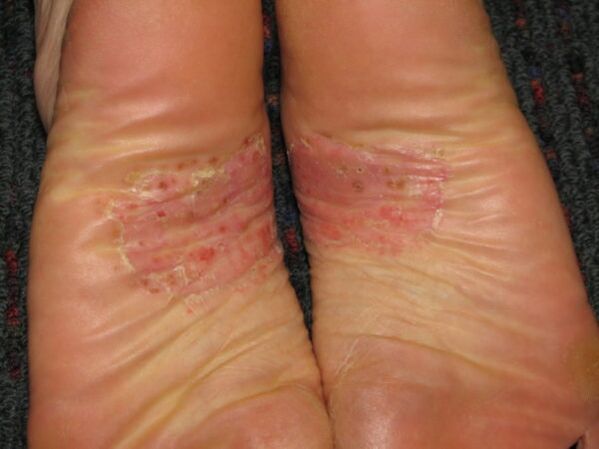
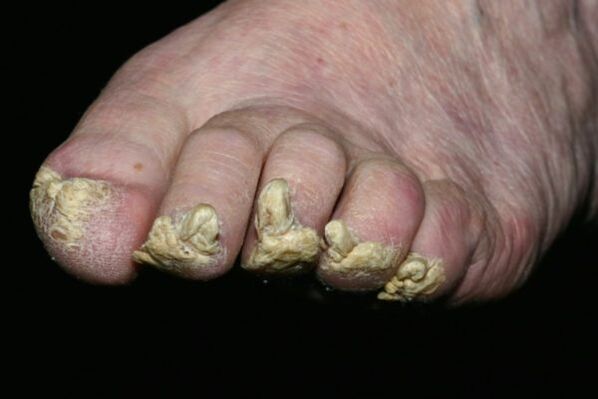
Drug treatment of psoriasis
The medical treatment of psoriasis depends on the degree of the disease.
- light. For the treatment of this mild disease, local therapies (ointments, creams, gels) are used. Salicylic acid and zinc ointment showed good results. In order to obtain a high therapeutic effect, a combination therapy is used, which includes drugs containing hormones and vitamins. The drugs they used include a medicinal substance-anthralin.
- average. For the treatment of this degree of disease, in order to eliminate all symptoms of the disease, all treatment methods are very important. Use laser therapy, light therapy, plasma exchange (removal of toxic substances from the blood) and cryotherapy (cold therapy) together with drug therapy. If complications occur, prescribe corticosteroid ointment: hydrocortisone, cortisone.
- Heavy. This level is the most difficult, and all means and methods are needed to relieve the symptoms of leg psoriasis. In these cases, drugs that suppress the immune response, antihistamines, and antibiotics are prescribed.
Physical therapy for psoriasis
Physical therapy effectively complements the medical treatment of psoriasis. In medical practice, there are several physical therapy methods:
- Light therapy for legs. Ultraviolet radiation is the most effective way to treat psoriasis. The method involves exposure to ultraviolet light in a medical institution. No side effects were found, and it will not affect the body. After phototherapy, the plaques were reduced and 80% of patients recovered completely.
- Cryotherapy. The method is based on cold treatment. The course can last from one to six months. For leg psoriasis, when the cold is only for certain lesions, local surgery is prescribed. These treatments can reduce itching, inflammation, promote tissue repair and slow down the formation of new scales.
- Ultraviolet blood cell count (plasma electrophoresis). This medical method is relatively new, and its distinctive feature is that the treatment effect is fast. The essence of the process is to insert a tube into a vein through which blood is poured into a blood vessel located in a special device. There, the blood is exposed to ultraviolet radiation and then returns. The procedure is carried out under completely sterile conditions.
- Pois therapy. This treatment method is suitable for patients with severe psoriasis. It is based on the use of psoralen-a substance that increases the sensitivity of cells to ultraviolet radiation. This method is very effective. After 25 treatments, a large number of rashes almost disappeared.
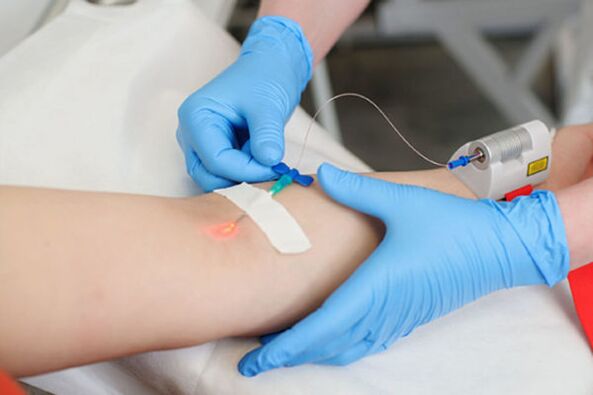
Traditional medicine formula for psoriasis
- Many patients use traditional medicine to treat this disease. It can be tincture, body wash, lotion, decoction. Various herbs are used to cleanse the skin, such as calendula, chamomile, and celandine. They can relieve inflammation and burning sensations.
- broth. For the broth, you must use a range (2 tablespoons), celandine (1 tablespoon), licorice root (2 tablespoons) and oregano (1 tablespoon). Mix all the herbs and soak for 20 minutes. Take half a cup of broth by mouth twice a day. This therapy is effective for mild psoriasis.
- ointment. There are many folk recipes for making ointments based on birch tar.
- Mix birch tar (50 ml) with olive oil (50 ml). Apply the obtained ointment to the painful skin, preferably with gauze before going to bed. Rinse it off with warm water in the morning.
- Birch tar (30 ml), castor oil (30 ml), honey (60 g) and 2 eggs. Mix all the ingredients and store in a cold place for 2 days. Apply the ready-made mixture every day for one month.
- Baths. Traditional medicine uses celandine bath to treat leg diseases. Celandine not only helps to eliminate the rash, but also eliminates the cause of the disease manifestation. Pour the herbs into boiling water and soak for one hour. Filter the infusion and add it to the foot bath. The bath time should not exceed 15 minutes.
- compression. In addition, if you have psoriasis on your legs, a potato dressing will help. To prepare such a dressing, you need to grind the potatoes and place the prepared composition on your feet and wrap them in plastic wrap. The duration of compression does not exceed three hours.
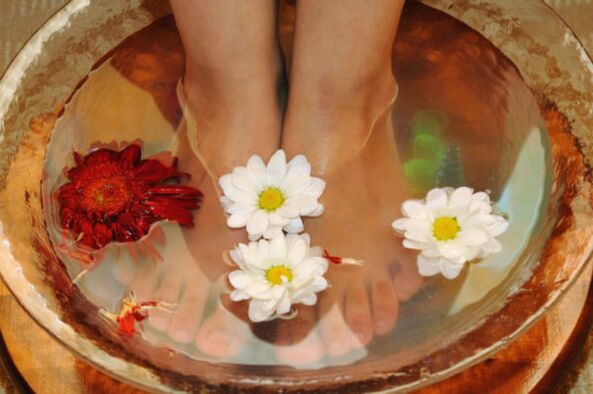
diet
Diet plays an important role in psoriasis. During severe inflammation, it is necessary to follow some dietary rules. Don't eat smoked, salty and greasy foods. Sweets, citrus fruits and dairy products are also contraindicated when sick. Drinking alcohol is strictly prohibited.
Complications and consequences
Any disease, if left untreated, can cause serious complications. Foot psoriasis can cause the following consequences:
- Pain when walking;
- Ordinary psoriasis can develop into erythroderma;
- The occurrence of other infections;
- Violation of the metabolic process;
- Decreased epidermal protection;
- Violation of skin temperature regulation.
Prevent leg psoriasis
If you follow all precautions, you can prevent psoriasis disease. Prevention suggestions:
- Treat your feet with antibacterial and nutritional preparations;
- Treat toenails to avoid fungal infections;
- Daylight treatment
- When wearing closed shoes, be sure to ventilate your feet;
- Frequent physical activity.
The main rule to prevent any disease is to adhere to a healthy lifestyle.























